Did the auditors sleep on the job?
Did they collude with the management?
Can we even trust auditors?
Ghanaians have been asking such questions ever since the Bank of Ghana withdrew the licenses of five banks.
So, to better judge the work of an auditor, you must:
- Understand the objectives the auditor seeks to achieve.
- Know that audit standards[1] define how the auditor works.
In this article, we discuss the objectives the auditor seeks to achieve in a financial statement audit. We will discuss the various aspects of an audit in follow up articles.
Note: This article has a technical flavour.
Why an audit?
The management of the business prepares the financial statement. Investors, creditors and others use financial statements when making financial decisions. They rely on the financial statements put out by the management. And they must be confident that the financial statements are trustworthy and reliable.
Financial statement audits give users confidence that the financial statements are reliable.
What is the goal of an audit?
Financial statement auditors have specific goals that are common to all audits. The primary goals of a financial statement auditor are:
- To obtain reasonable assurance about whether the financial statements are free from material misstatement.
- To express an opinion on whether the financial statements are prepared, in all material aspects, in accordance with a financial reporting framework; and
- To report on the financial statements, and communicate as required by the ISAs, in accordance with the auditor’s findings[2].
The management of the business cannot change these primary goals. They can, however, set other goals that they wish to achieve, with the agreement of the auditor.
What does this technical definition mean?
To aid understanding, let us look at a definition of some keywords in the above:
- Reasonable assurance – is a high, but not absolute, level of assurance. The auditor cannot guarantee that the financials are free of any misstatements. He must be confident that any misstatements in the financial statement are not material.
- A misstatement is the difference between what the financial statement shows, and what it should be under the financial reporting framework. The difference can be due to an error or fraud.
- Material misstatement – is a misstatement that affects the decisions based on the financial statement.
- Financial reporting framework – sets the rules for deciding the amount, classification, presentation and disclosure in financial statements.
- The financial reporting framework allowed in Ghana is the International Financial Reporting Standards (IFRS) or IFRS for small and medium entities.
- The opinion is the auditor’s view or judgment. He must base his opinion on evidence and the work done must meet the requirements of the audit standards.
6 key takeaways
- The auditor takes the risk of error and fraud into account in planning and executing his work, but the search for fraud is not his main aim.
- The auditor gives an opinion on whether the financial statement is free from material error. If there are errors, he must be confident based on the work done, that they do not affect the overall view the financial statement presents.
- The auditor uses an accounting framework to judge whether there are misstatements.
- Management chooses the accounting framework to use and accounting policies. The auditor decides if the framework and accounting policies are appropriate and suitably applied.
- Audit standards set the yardstick the auditor must meet. The quality of his work will be judged using the audit standards.
- The auditor exercises discretion and judgment in how he does his work.
Written by Emile Vorgbe
Emile is the manager of the audit unit of SCG Chartered Accountants.
[1] IAASB is International Audit and Assurance Standards Board, a global body, issue globally used audit standards.
[2] ISA 200 – Overall Objectives of the Independent Auditor and the Conduct of an Audit in accordance with the International Standards on Auditing. This is one of the standards issued by the IAASB

